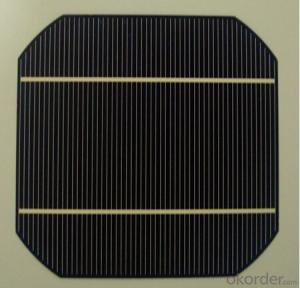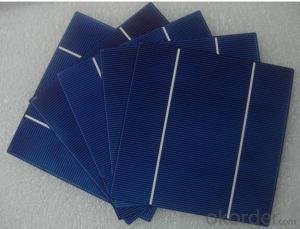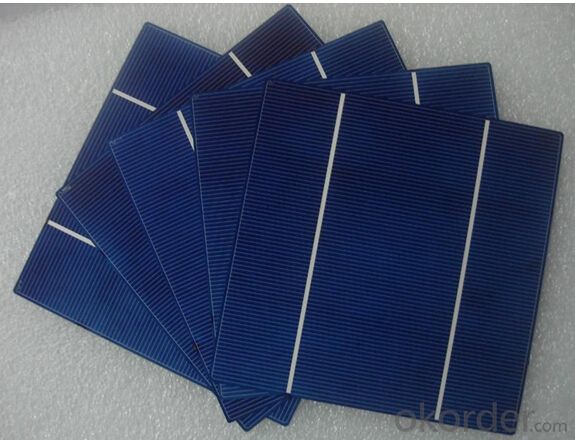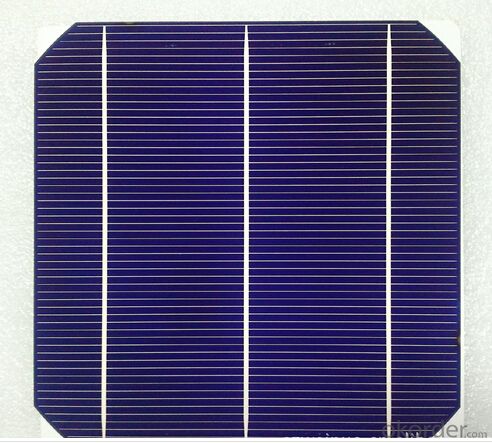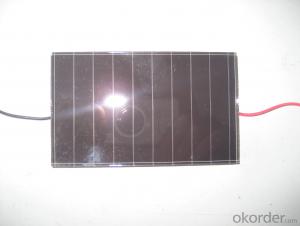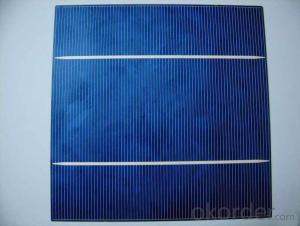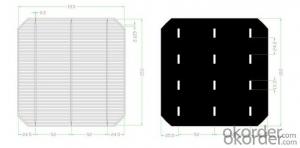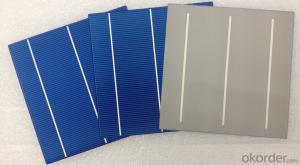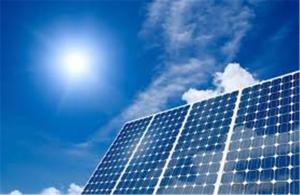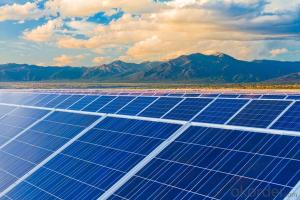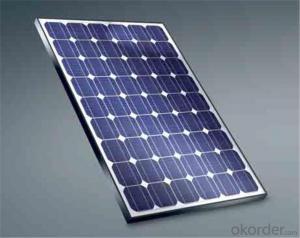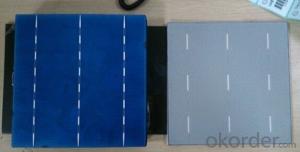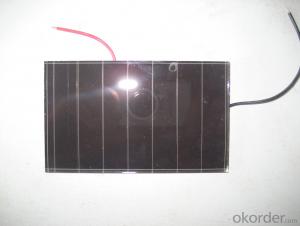40x26mm 4v 20ma Silicon Wafer Solar Cell for 800w Solar Panel
- Loading Port:
- China main port
- Payment Terms:
- TT OR LC
- Min Order Qty:
- 100 watt
- Supply Capability:
- 10000 watt/month
OKorder Service Pledge
OKorder Financial Service
You Might Also Like
40X26MM 4V 20mA Solar Cell for 800W Solar Panel
Solar Module Summarize
Solar Module is the core part of solar PV power systems,also is the highest value part of it. The function of Solor Module is to convert the sun's radiation to electrical energy, or transfer it to battery and store in it, or to drive the load running.
The Product has been widely used in space and ground, it mainly used for power generation systems, charging systems, road lighting and traffic signs areas. It could offer a wide range of power and voltage, and with high conversion efficiency, and long service life.
Our Cells Special Features
1. High conversion efficiencies resulting in superior power output performance
2.Outstanding power output even in low light or high temperature conditions
3.Optimized design for ease of soldering and lamination
4.Long-term stability,reliability and performance
5.For 156P poly cells with high efficiency in photovoltaic conversion 16.3%-17.5%.
6.Low inverse current, high shunt resistance and high dependability.
7. Our poly cells efficiency include: 17%-18%.
Product Pictures
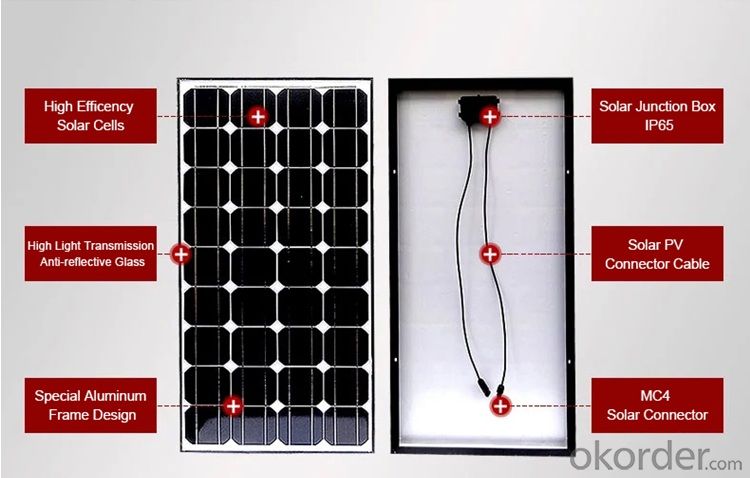
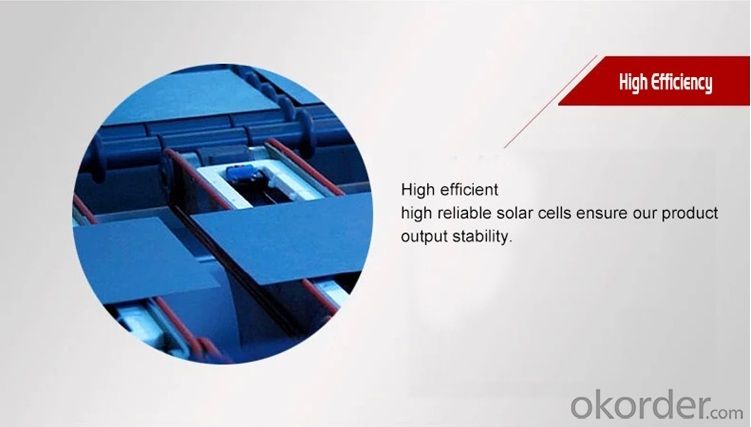
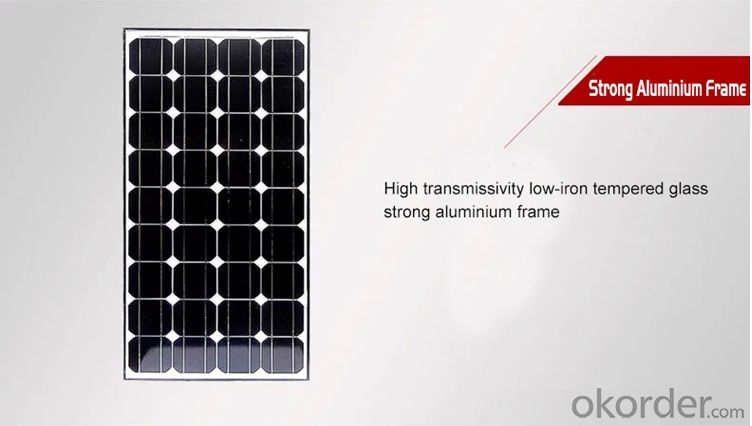
Package
Typical package for one carton contains 1,200 cells. The cells are sealed in cell box every 100 pcs.
Gross weight per unit carton shall be around 16.4kg.
- Q: How does the quality of a solar silicon wafer affect solar cell performance?
- The quality of a solar silicon wafer significantly affects solar cell performance. A high-quality wafer ensures better efficiency and durability in converting sunlight into electricity. It affects the cell's ability to capture and absorb sunlight, reducing losses due to reflection and recombination of electrons. A low-quality wafer may contain impurities or defects that can hinder the flow of electrons, reducing the overall performance and power output of the solar cell. Therefore, investing in high-quality silicon wafers is crucial for maximizing the efficiency and long-term performance of solar cells.
- Q: What is the effect of temperature on the efficiency of a solar silicon wafer?
- The temperature has a significant effect on the efficiency of a solar silicon wafer. As the temperature increases, the efficiency of the wafer decreases. This is because higher temperatures can lead to increased resistance in the wafer, which in turn reduces the flow of electricity. Additionally, higher temperatures can cause the semiconductor properties of the wafer to degrade, resulting in a decrease in its ability to convert sunlight into electricity. Therefore, controlling and minimizing the temperature of the solar silicon wafer is crucial for maximizing its efficiency and overall performance.
- Q: How are solar silicon wafers affected by light-induced degradation?
- Solar silicon wafers are affected by light-induced degradation as they experience a decrease in their photovoltaic performance over time due to prolonged exposure to sunlight. This degradation is primarily caused by the presence of impurities in the silicon material and the formation of defect states known as "traps" within the solar cells. These traps trap charge carriers, reducing the efficiency of the solar cells and leading to a decrease in their power output.
- Q: What is the purpose of an encapsulant in a solar silicon wafer?
- The purpose of an encapsulant in a solar silicon wafer is to protect the wafer from external factors such as moisture, dirt, and mechanical stress, ensuring its durability and longevity. It also helps in maintaining the electrical properties of the wafer and enhances its overall performance by reducing reflection and increasing light absorption.
- Q: What is the purpose of a power output in a solar silicon wafer?
- The purpose of a power output in a solar silicon wafer is to convert sunlight into usable electrical energy. The power output is the measure of how much electricity the solar cell can produce, which determines its efficiency and usefulness in various applications, such as powering homes, businesses, or even charging electronic devices.
- Q: How is a power optimizer integrated into a solar silicon wafer?
- A power optimizer is typically integrated into a solar silicon wafer through a specialized electrical circuitry. This circuitry is designed to maximize the power output of each individual solar cell on the wafer, by monitoring and optimizing the voltage and current levels. The power optimizer is connected to each solar cell, allowing it to regulate and enhance the performance of the entire solar panel system.
- Q: Are there any limitations to using solar silicon wafers in solar cells?
- Yes, there are limitations to using solar silicon wafers in solar cells. Some of these limitations include the high cost of production and the environmental impact associated with the extraction and purification of silicon. Additionally, silicon wafers are relatively brittle and can be prone to cracking or breaking under certain conditions. Furthermore, the efficiency of silicon solar cells can be reduced by factors such as temperature, shading, and a limited absorption spectrum. However, ongoing research and development efforts are focused on addressing these limitations and improving the performance and cost-effectiveness of silicon-based solar cells.
- Q: How do solar silicon wafers perform in mountainous environments?
- Solar silicon wafers perform well in mountainous environments due to the high elevation and reduced air pollution. The thinner air allows for greater solar irradiance, resulting in increased energy production. Additionally, the cooler temperatures at higher altitudes can improve the efficiency of solar panels, making them more effective in mountainous regions.
- Q: How do solar silicon wafers perform in high rainfall regions?
- Solar silicon wafers perform well in high rainfall regions as rain does not significantly affect their efficiency or durability. The rainwater helps in cleaning the surface of the wafers, removing any dust or debris that may have accumulated, thus enhancing their performance. Additionally, the wafers are designed to be waterproof, ensuring that the internal components remain protected from moisture. Therefore, high rainfall regions do not pose any major challenges to the performance of solar silicon wafers.
- Q: Can solar silicon wafers be used in remote or inaccessible areas?
- Yes, solar silicon wafers can be used in remote or inaccessible areas. Solar panels made from silicon wafers are highly durable and can withstand harsh environmental conditions, making them suitable for remote locations. Additionally, advancements in solar technology have made it possible to design solar panels that are more efficient and can generate electricity even in low light conditions, making them adaptable to various remote environments.
Send your message to us
40x26mm 4v 20ma Silicon Wafer Solar Cell for 800w Solar Panel
- Loading Port:
- China main port
- Payment Terms:
- TT OR LC
- Min Order Qty:
- 100 watt
- Supply Capability:
- 10000 watt/month
OKorder Service Pledge
OKorder Financial Service
Similar products
Hot products
Hot Searches
Related keywords
